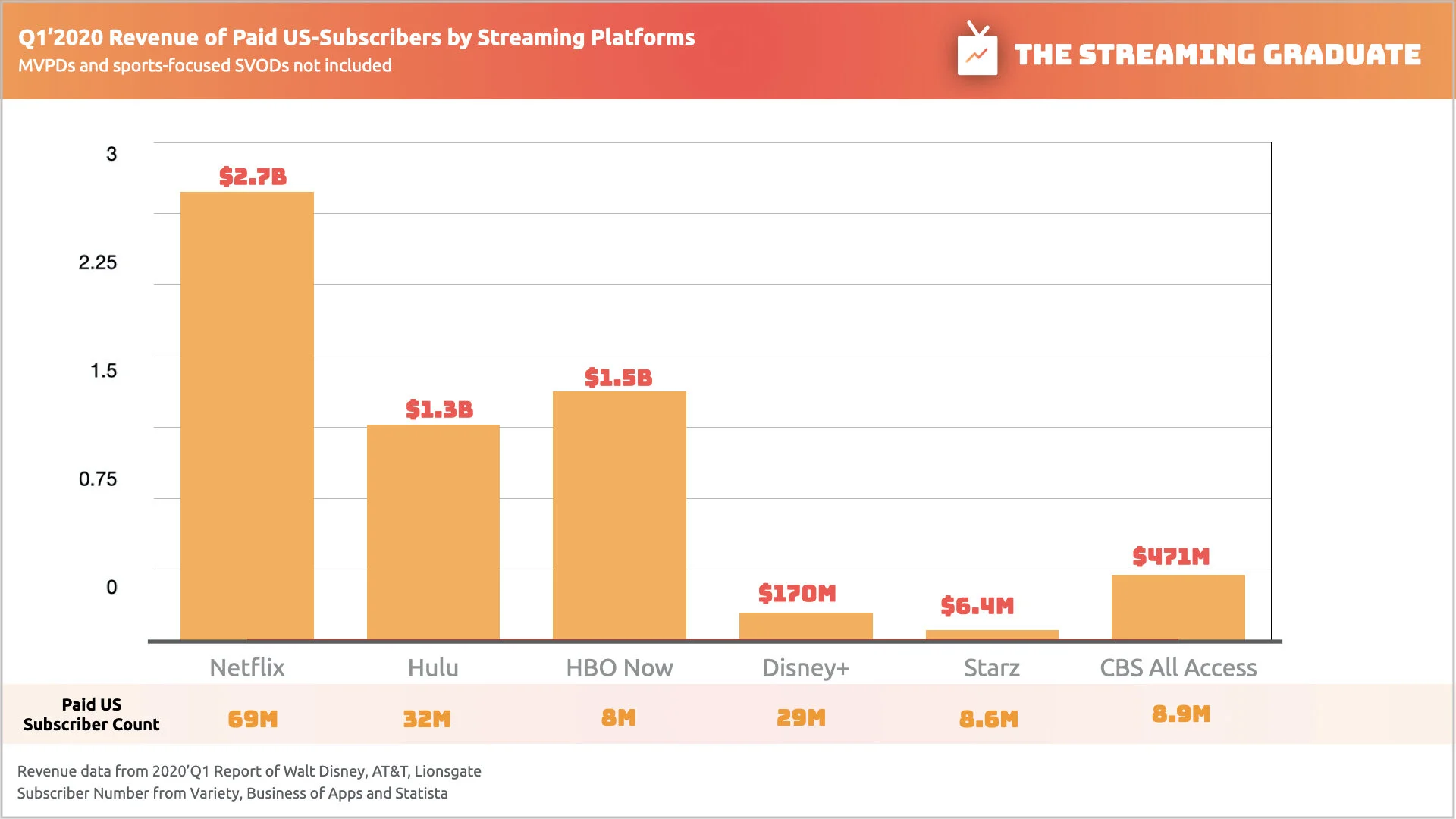Streaming 101: How Do Streaming Services Make Money?
In its most basic definition, streaming services are online providers of entertainment. They provide content, be it movies, TV Shows, and music via the Internet through their online platforms that are generally web-based or app-based. Several services saturate the streaming landscape, from niche services such as Criterion to a juggernaut veteran like Netflix. While their go to market strategy, their service offering, and their capabilities differ from one another, most streaming companies more or less follow the same revenue models. In this article, we are going to go through the common ways in which streaming platforms like Netflix, Hulu, and HBO NOW generate revenue streams.
Subscription Video on Demand (SVOD)
Under this revenue model, streaming companies allow for the digital access of their content library, and in return, consumers get charged monthly fees for accessing that content. With a highly valued content library and outstanding brand loyalty, SVOD models tend to have the highest yield since subscribers are steady & consistent stream of revenue, they have direct control over the pricing tiers they offer.
In the first quarter of 2020, Netflix had 69.7 million paying subscribers in the US (for a total of 182.9 million worldwide). According to their Q1 report, they generated in the US and Canada a revenue of 2.7 billion dollars as of March 31st, 2020. Another example is HBO NOW, which is one of the two paid SVOD platforms from Warner Media (HBO Now & HBO Max), held 8 million US subscribers, and generated an estimated revenue of $130 mullion from paid subscriptions.
Advertisement-supported Video on Demand (AVOD)
In this revenue model, subscribers are non-paying and are allowed to watch content for free; however, they must watch advertisements at various points throughout the content. Streaming services will work with businesses, brands, and advertisers (e.g., Walmart, Loreal, or Nike) so that those streaming companies serve their ads to the non-paying audience. A portion of the ad dollars may go to the creators, while the other part will go to the streaming platform. The challenge with AVOD models is to earn revenue through advertising, and you need to have a broad audience. Revenue from a single ad is low - it is the volume and the propensity to scale that will influence its profitability.
Because of the low per-ad revenue, Advertising generally is a volatile and market-dependent option for generating revenues. Often, the cost of producing the shows and movies for your content library will much higher than the income you will get in ad revenue if you are unable to scale. You need to have a large enough audience to be able to offset the low revenue generated from a single ad to recover your production costs.
Example: YouTube is primarily known to be a popular content platform, but I would argue that from purely a business standpoint, YouTube is more of an advertising company serving ads in exchange for content.
Transactional Video on Demand (TVOD) or Pay Per View (PPV)
PPV is the oldest business model since it got its start in 1948 when the first-ever was televised for the Joe Louis Vs. Jersey Joe boxing match. While the media landscape has evolved since the 1940s, nothing's changed in how pay per view works. Under this model, streaming services can make specific properties accessible for users on the distributor's website for a fee. The difference between traditional subscription and Pay-Per-View content is that for PPV, consumers will pay to get access to the specific property or content. In contrast, in the case of traditional subscriptions, consumers will pay to get access to streaming platforms.
While PPV might be the least common path to consumption from a consumer perspective, the PPV model still yields high ROI even with limited content payers. If compared to the AVOD model, a business won't need as much volume to scale under PPV. Under an AVOD model, you'll need thousands of viewers to earn a lot of money. In the case of Pay Per View events, you can make thousands of dollars in revenue with a much smaller audience.
Partnerships & Licensing
Licensing in the realm of online streaming content is the process of obtaining permission from the owner of a TV show or movie to stream its content through a platform. A licensing agreement is a legally binding contract between the content owners and a streaming service for an extended time. Think of it this way: when companies are licensing content from content owners, they are renting the content for a predetermined price, so that they can have permission to stream it on their platforms. For instance, in 2011, Netflix has paid $1 Billion to CBS (presently ViacomCBS) to license CW shows such as The Flash, Dynasty, Gossip Girls, and that deal was re-upped in 2016.
But just as streaming services like Netflix can pay to license non-original shows from other companies, they can also generate revenue from their properties they get to license to other streaming platforms. For example, HBO isn't likely to license its shows to a competitor like Showtime. Still, they can have an agreement with Hulu or Amazon Prime Video, where they charge a separate subscription fee to consumers who want to watch their properties. Licensing your content to other platforms is a great way to generate an additional revenue stream and allow you to reach a broader set of consumers.



